
Last week @IPBES welcomed the #naturefuturesframework, an approach to develop a new generation of nature-centred scenarios exploring desirable futures. Why is this important and how did we arrive here? A thread👇 

In 2016 @IPBES published an assessment on scenarios and models. It found that existing scenarios failed to fully incorporate the multiple benefits of biodiversity to people at multiple scales. It encouraged the scientific community to develop a new generation of scenarios. 

The assessment called for scenarios that addressed multiple temporal and spatial scales, that addressed multiple components of the @IPBES conceptual framework, and that used a participatory approach to develop intervention and exploratory scenarios. 

Later that year @idiv co-organized with @nlenvironagency the first workshop of the @IPBES expert group on scenarios and models to start tackling this challenge. 

This workshop outlined an ambitious plan to develop IPBES-tailored scenarios. A first step was to provide SSP/RCP based scenarios to the on-going global assessment (the BES SIM exercise) and the second step was the novel multi-scale nature futures.
nature.com/articles/s4155…
nature.com/articles/s4155…
The idea of multi-scale desirable ‘nature futures’, based on the perspectives of different stakeholders, taking into account goals for both human development and nature stewardship, was born! 

The next step was a visioning exercise with stakeholders and experts from around the world in New Zealand, hosted by @niwa_nz @cjlinnz in September 2017, lead by @laurap18, @resilienceSci, @KVinkhuyzen and others. 
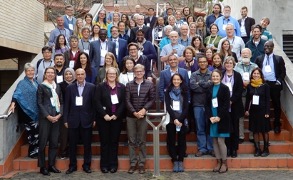
This visioning workshop resulted in a set of seven positive visions for nature futures: nature-based prosperity, rewilding urban-rural landscapes, multiple values and culture, sustainable food systems, dancing with a resilient nature, healthy oceans and freshwater ecosystems. 

In order to develop cross-sectorial scenarios for the nature futures, we started exploring how the seven visions could be mapped into different axis of people's preferences of nature. This was documented on a report niwa.co.nz/sites/niwa.co.… 
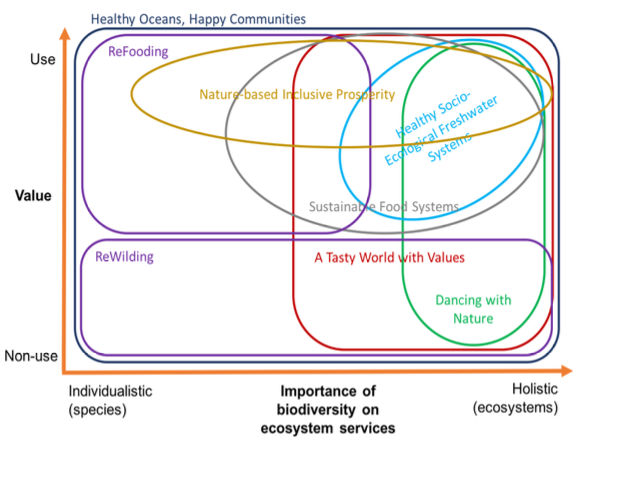
We also started a series of consultations with stakeholders on these visions for nature futures, for instance with workshops at the @NatCapProject conference, @UNBiodiversity COP14 and the @IPBES MEP in 2018. 



The three nature future perspectives emerged from these efforts at a workshop @nlenvironagency in June 2018, bringing together the @IPBES expert group and modellers. 

We came to realize that the highly multidimensional space of people's preferences for nature could be projected into three main axes: Nature for Nature, Nature for Society and Nature as Culture. 
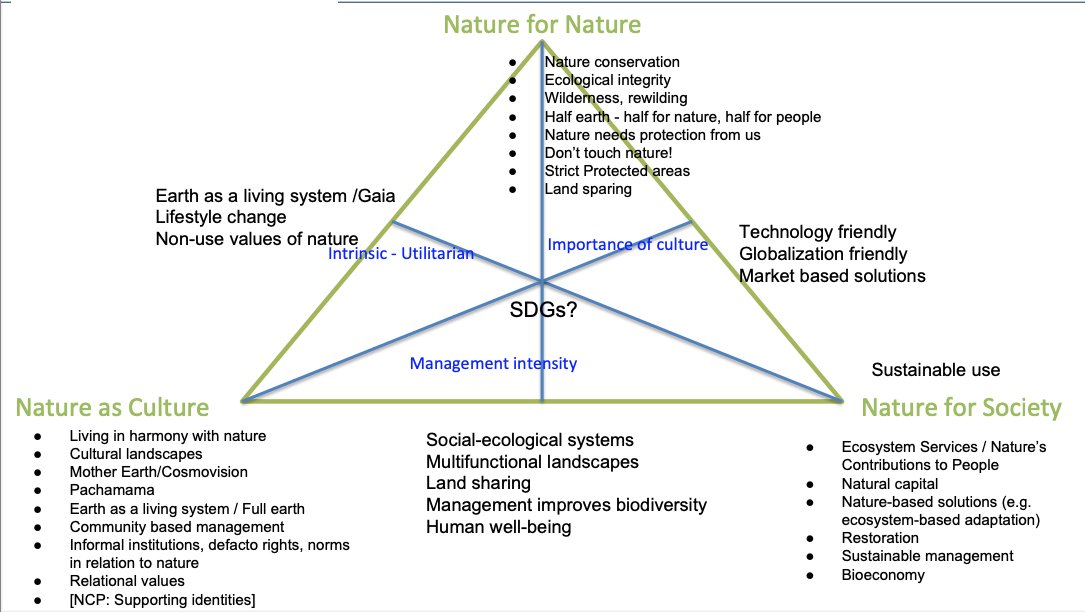
It's a beautiful idea. We cannot capture all the dimensions of people's preferences for nature in scenarios, but we can at least capture three main perspectives. Each of them is associated with a set of worldviews, concepts and values. It's like a PCA of the preference space. 

We documented the whole process for developing the visions and the emerging three nature future perspectives in a paper, onlinelibrary.wiley.com/doi/10.1002/pa… 

The next step was the 2019 Vancouver workshop of the @IPBES Expert Group on Scenarios and Models hosted by William Cheung @UBC. It became clear the triangular representation of nature futures did not allow to represent the temporal trajectories or the co-benefits of interventions 

In this workshop we developed the Nature Futures state space and the Nature Futures policy space. This has now been presented in a paper lead by @hyejinkim715 currently in review. 

In the Nature Futures state space we can represent the pathways of any place in the planet. In most situations it is possible to conceive scenarios that improve the condition of nature according to all three perspectives. 

However, as one approaches the "Pareto frontier" of the state space, improvements in one of the perspectives can only be achieved at the cost of improvements in other perspectives, and trade-offs emerge between scenarios maximising each perspective. 

The same of this frontier (yet to be studied with models) will tell us how strong these trade-offs are. A convex shape will correspond to strong trade-offs while a concave shape will correspond to very few trade-offs. 

The policy space allows us to score different interventions on these three perspectives. Some policy interventions may favour mainly one of the perspectives, while other policy interventions may positively affect all perspectives. 

So it's now up to the scientific and practitioner community to use this framework to develop nature futures scenarios at multiple scales, across sectors and systems, in time for the next @IPBES global assessment. 
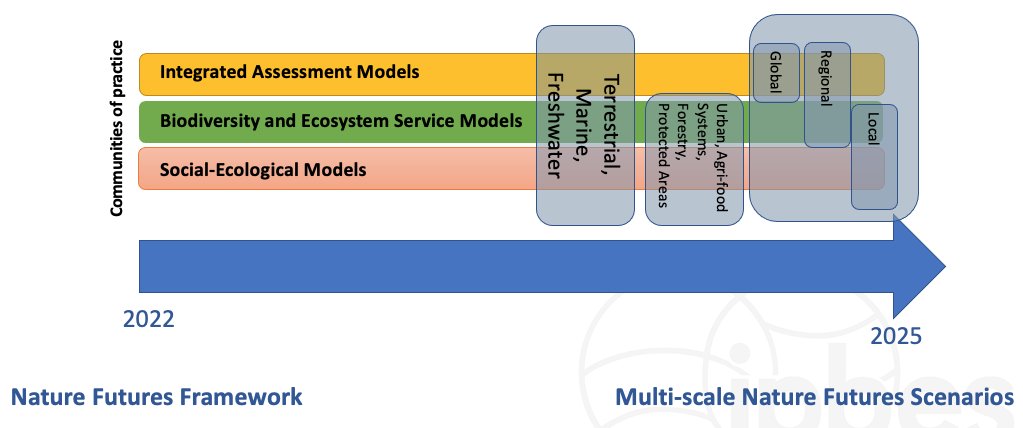
A couple months ago we brought together representatives from the IAM, biodiversity/ecosystem services, and social-ecological modelling communities to discuss progress in using the #naturefuturesframework and future prospects. @IPBES Task Force on Scenarios and Models 

We learnt about amazing progress and a diversity of uses already in place. For instance the development of urban scenarios with the #naturefuturesframework.
linkinghub.elsevier.com/retrieve/pii/S…
linkinghub.elsevier.com/retrieve/pii/S…

The re-intepretation of existing participatory scenarios using the #naturefuturesframework and what that tells us about nature contributions to people and rewilding.
onlinelibrary.wiley.com/doi/10.1111/ec…
onlinelibrary.wiley.com/doi/10.1111/ec…

And many other examples from how to meet the EU Green Deal and Biodiversity Strategy goals using each of the three nature futures @peterverburg11 (there are multiple ways to get there), how the SSPs perform in the nature futures space (poorly) @LandChange_KIT.
The #naturefuturesframework helps to think how to move towards biodiversity democracy where a diversity of values and preferences for nature across stakeholders are incorporated in democratic decision making.
sciencedirect.com/science/articl…
sciencedirect.com/science/articl…
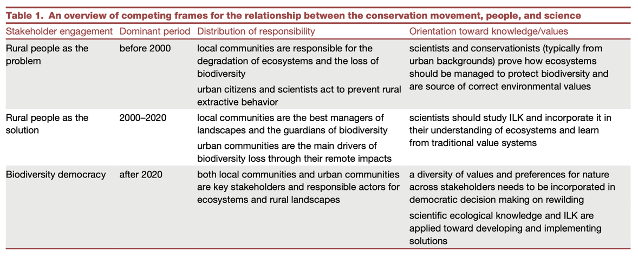
I am looking forward to the next few years of development of multi-scale scenarios with the #naturefuturesframework. @idiv will be hosting a open workshop on modelling the nature futures in 2023, so stay posted! 

• • •
Missing some Tweet in this thread? You can try to
force a refresh



